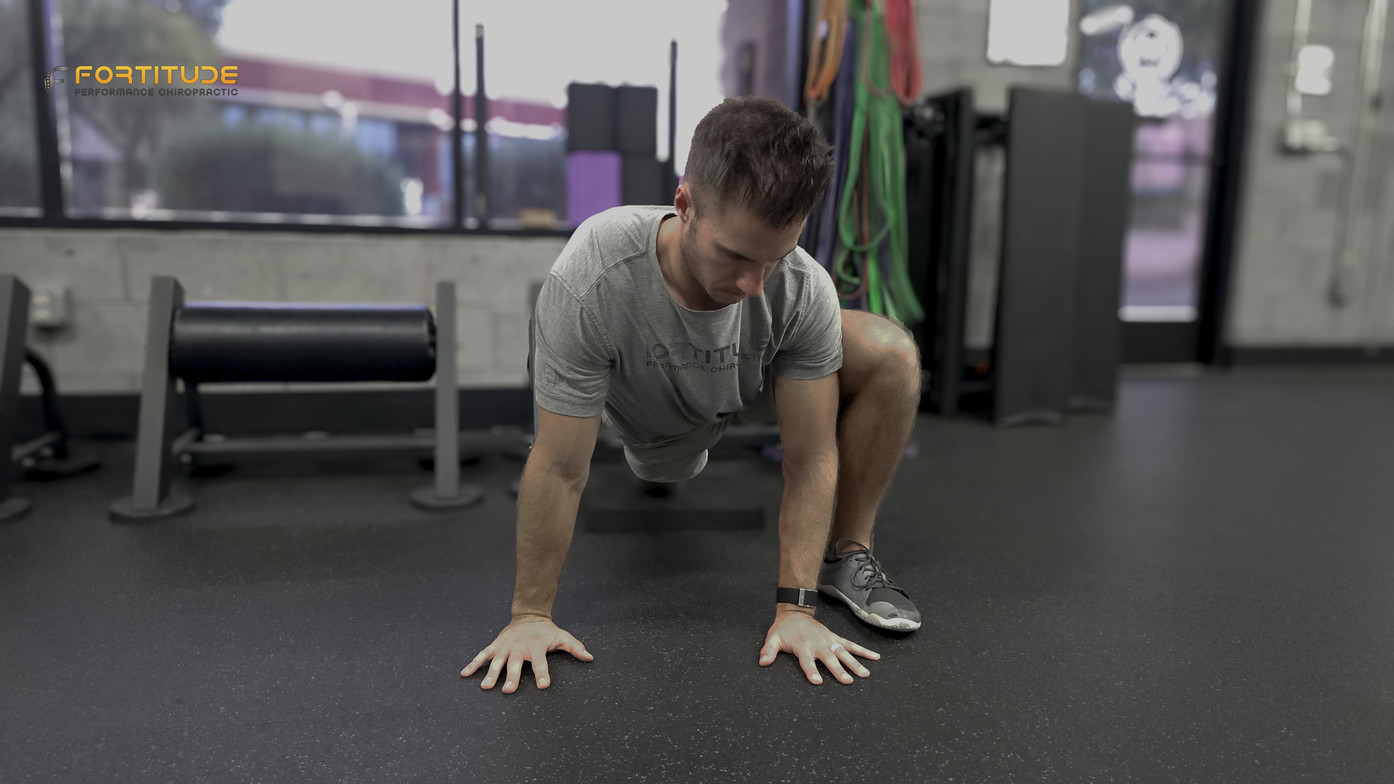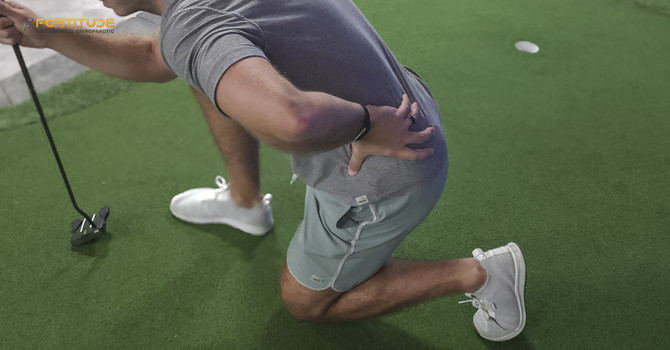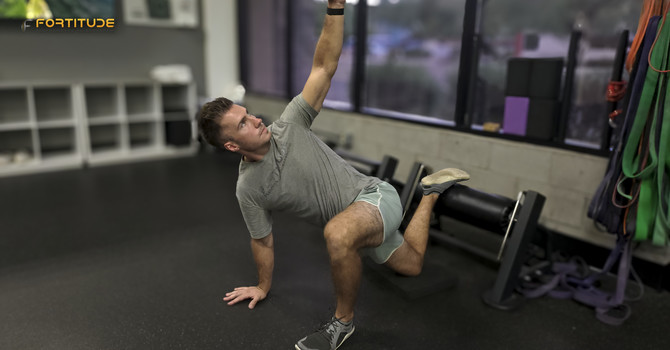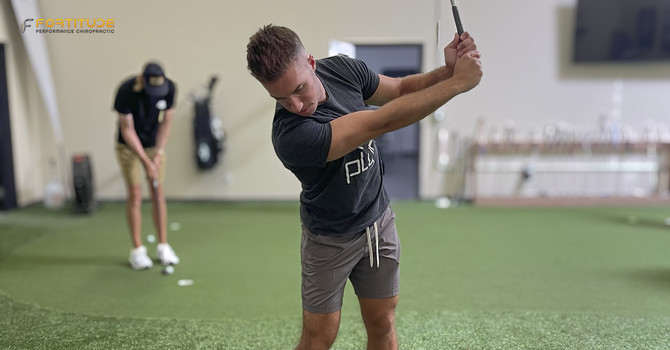
Why Doing More Core Work Isn’t Fixing Your Low Back Pain
You’ve been hammering planks, yet your back still hurts.
You’ve done everything the YouTube videos and gym coach said to “strengthen your core,” but that stubborn low back pain isn’t going away.
It’s frustrating, and good news/bad news you are not alone.
Many active adults put in the ab work only to find their low back pain keeps coming back.
The truth is, the whole “weak core causes back pain” story is incomplete. Core strength does matter, but it’s only one piece of the puzzle when it comes to lasting back pain relief.
So why isn’t your back getting better if you’ve been diligently doing core exercises?
In our experience at Fortitude Performance Chiropractic, resolving low back pain means looking beyond your abs. Yes, your core muscles support your spine, but focusing on core work alone often falls short.
In fact, research shows targeted core exercises are no more effective than general exercise for chronic low back pain, and experts stress that core strengthening is just one part of the solution.
In many cases, the real issue isn’t your lower back or your six-pack at all. We often find back pain is actually a symptom of something else, like a mobility problem in your hips or upper back, or a movement pattern that forces your spine to overwork.
If your swing, squat, or stride is compensating for a tight joint or a sleepy muscle, that’s when pain tends to flare up.
Why Core Exercises Alone Won’t Cure Your Low Back Pain
It’s easy to blame persistent back aches on a “weak core.” But if crunches and planks haven’t solved your pain, it’s time to consider what else might be going on. A strong core is important for spine support, but it’s not a magic bullet for low back pain.
Back pain is usually multi-factorial. For example, if your hip joints are stiff or your glutes aren’t pulling their weight, your lower back will pick up the slack during everyday movements, no matter how many core drills you do. Or if your mid-back (thoracic spine) doesn’t rotate well, your lumbar spine might be twisting too much to compensate. Over time, those issues lead to irritation and pain.
“We had a golfer come in with what he described as ‘tight low back pain’ that always showed up by the 12th hole. But after running him through a movement screen, we found the real issue wasn’t his “weak core” at all. It was his hip mobility and inability to disassociate his upper and lower body during his swing. His body had found a way to make the swing happen, but his low back was absorbing all the extra stress, and turns out his core was super strong already!Once we cleaned up how his hips were moving and taught him how to disassociate his ribcage from his pelvis, the back pain disappeared and he is able to play 18 holes no problem. It’s a great reminder that where it hurts isn’t always where the problem starts and that the core isn’t always the bad guy.”- Dr. Molly, DC
Dr. Molly’s story illustrates a common truth: the spot that hurts is often just the victim, not the perpetrator. In this patient’s case, limited hip mobility (and the inability to disassociate his upper body and lower body) forced his lower back to do a job it wasn’t designed to do. The core strengthening he’d been doing wasn’t a bad thing, it just wasn’t addressing the actual limitation.
Here are a few other “missing links” we frequently uncover when core workouts alone aren’t helping low back pain[4]:
· Stiff hips or ankles: If your hips or ankles lack mobility, your knees or lower back may take the brunt of movements. For instance, a golfer or hiker with tight ankles will unknowingly stress their low back with each swing or step.
· Poor core activation under load: You might have strong abs in isolation, but if your core isn’t stabilizing when you lift, run, or twist, your spine ends up working overtime[5]. Stability is about timing and coordination, not just raw strength.
· Locked-up upper back (thoracic spine): When your mid-back doesn’t rotate or extend well, you’ll compensate by moving more through your lower back or neck. That extra strain can trigger pain in those areas.
· Weak or inactive glutes: Your gluteal muscles are major stabilizers for your pelvis and spine. If they’re not strong enough (say, during a deadlift or your golf swing), your lower back muscles will overexert themselves to help generate power but willeventually protest.
· Old injuries and compensation: Sometimes a past ankle sprain, knee injury, or even long-forgotten spill on a mountain bike can set off a chain reaction. Your body may develop a slight limp or asymmetry to avoid pain, and over time that compensation can add up over time. Unless that pattern is spotted and corrected, no amount of planks or crunches will stop the cycle of pain.
The key point is that strengthening one area (your abs) won’t fix everything if other key areas aren’t doing their part. You can have rock-solid abs and still have pain if, say, your hip joints barely move or you don’t actually rotate through your swing (you’re armsy). This is why you might feel like you’ve “tried everything” and nothing works, the core exercises aren’t wrong, they’re just not targeting your specific problem.
As Dr. Maxim often tells patients, doing generic exercises without addressing your unique weak link is like “pumping up a tire without fixing the leak.” You need to find and fix the leak.
“We see a lot of people who’ve done PT or have tried a golf trainerbefore, but they never had their movement really broken down. We’ll test things like single-leg balance, hip rotation, and trunk stability and almost always find something that was missed. That’s why they never really got better.”
- Dr. Maxim, DC
How Fortitude Finds and Fixes the Real Problem
At Fortitude Performance Chiropractic, we don’t just zero in on your low back and call it a day, we take a whole-body approach. Our first step with any patient who’s stuck in the pain cycle is a one-on-one, full-body movement assessment. We literally watch how you move from head to toe.
We look at how your joints are moving (or not moving), whether your core and glutes are firing when they should, and how you bend, lift, twist, and squat in real life[6].
This assessment shows us where your body might be compensating. Maybe we’ll discover your middle back is stiff as a board, your hips are tighter than your pants from high school, or you are armsy because your body hasn’t learned how to disassociate the top from the bottom.. All those clues help us pinpoint why your back is under strain.
What happens next? Armed with that knowledge, we build you a plan to fix the root cause, not just chase the symptoms. Here’s what that typically includes:
· Hands-on care to relieve pain and restore movement: We use chiropractic adjustments, targeted soft tissue work, and often dry needling to release stubborn knots and improve your joint mobility. If your hip is locked up or your lower back muscles are in spasm, this step creates immediate relief and gives you back some range of motion. (Many patients say they feel “looser” and can move better right away.)
· Targeted rehab exercises: This isn’t the random list of exercises you find on a handout or on instagram, it’s specific moves tailored to the root cause of your pain. If your assessment showed a stiff thoracic spine, we’ll incorporate thoracic mobility and teach your middle back how to rotate your shoulder during your swing. If ankle mobility was an issue, we might have you do heel elevated squats or ankle mulligans to train your ankles to move better. The goal is to fortify the weak link so your back isn’t taking all the load.
· Movement coaching and mechanics: We’ll also coach you on how to move smarter in your sport or daily life. Little tweaks, like how to hinge at your hips when picking up a weight, or how to protect your back when swinging a golf club, can make a huge difference. We want you to build awareness of your body so you’re not inadvertently undoing your progress. Many patients have an “aha!” moment when they realize a simple form adjustment takes strain off their back. Our job is to help you reach that moment and carry it into your workouts, golf game, hikes, and even your desk posture.
Throughout this process, we keep it honest and compassionate. We know you’ve been working hard (and it’s discouraging when pain persists). Our approach is about validating that effort while showing you a new perspective. It’s not about doing 100 more crunches or banning you from the gym, it’s about tweaking the game plan to finally get results.
The payoff? You don’t just feel better for a day or two; you move better, you get stronger in the right ways, and you gain confidence that your back won’t “go out” every time you push yourself.
Most importantly, we give you the tools and knowledge to stay pain-free. It’s a team effort: our expertise plus your commitment. When we do our part and you do yours, you’ll not only get relief now, but also build resilience for the long run. As Dr. Molly likes to say, the goal isn’t just to get you out of pain, it’s to get you back to doing what you love without fear of that pain coming back.
Getting a Real Solution for Your Low Back Pain
By now, you’ve probably gathered that doing more of the same thing (more core work, more ibuprofen, more YouTube stretches) is unlikely to solve a recurring back issue. Lasting relief comes from understanding why your back is hurting in the first place. Maybe it’s a hidden hip problem, a movement habit, or yes, even some core weakness, but you won’t know until you get a proper evaluation. The good news is, once you identify the true cause, the path to fix it becomes much clearer and faster.
You’ve worked hard on your own. You’ve tried to tough it out and do all the “right” exercises. If your low back pain is still lingering, it isn’t because you failed, it’s because something important hasn’t been addressed yet. The next step is to have an expert take a look under the hood (so to speak) and find that missing piece.
Gentle, effective relief is absolutely possible. We’ve seen golfers hit the course without pain after correcting their hip mechanics. We’ve watched gym-goers finally squat or deadlift with confidence once their movement pattern and glutes were retrained to work together. We’ve helped hikers conquer long trails again by releasing a nagging muscle tightness they didn’t even know they had. You can be next.
Don’t waste more time stuck in the cycle of temporary fixes. If you’re in the Scottsdale area and your low back pain isn’t getting better, consider this a friendly invitation to get to the root cause. Our Fortitude team is here to help you move freely and enjoy your active life again. Start by reaching out for a thorough assessment, we’ll listen to your story, figure out what’s really going on, and chart a plan to fix it for good.
Ready to finally fix your back pain (instead of just managing it)?
Contact us at Fortitude Performance Chiropractic or call 480-771-7098 to schedule a personalized assessment.
We’ll help you understand what’s keeping you in pain and guide you step-by-step to real, lasting relief. You’ve worked hard on your own, now let us help you get back to living pain-free and strong.
FAQ: Core Strength and Back Pain
Q: Does a weak core cause low back pain?
A: Weak abdominal and core muscles can contribute to back pain because your spine doesn’t get the support it needs. However, it’s rarely the only cause. Many people have rock-solid abs and still experience back pain due to other factors (like joint stiffness or muscle imbalances). Think of core strength as one important factor among many. It’s important, but so are your hip mobility, glute strength, posture, and even stress levels. That’s why simply doing sit-ups might not magically cure your pain, we have to look at the whole picture.
Q: Should I stop doing core workouts if my back hurts?
A: Not necessarily. In fact, gentle core exercises often help protect your back by improving stability. Moves like planks, bird-dogs, and dead bugs are generally safe for most people with back pain. The key is to pay attention to your body. If an exercise increases your pain, stop and get it checked out. It may be that your form needs tweaking or that particular move isn’t right for your condition. But in general, keeping your core active (with proper form) is better than avoiding exercise altogether. A strong, functional core, trained under the guidance of a professional, will usually help your back, not hurt it.
Q: What’s the best way to actually fix low back pain?
A: The best approach is to find out why you have low back pain and address that. For most people, that means getting a thorough evaluation from a professional who looks at your whole body movement (not just your spine). Once you know the root cause, be it lack of hip rotation, poor core engagement, etc. a targeted plan can be created. In our clinic, we combine hands-on therapies (to relieve pain and restore motion), targeted exercises, and movement coaching to tackle the specific issues driving your pain. There is no one-size-fits-all “best exercise” for everyone. The best solution is the one tailored to your needs. That might involve improving your hip mobility, strengthening certain muscles, learning better form, or often a mix of all of these. By treating the root cause, you get lasting relief, so you can get back to the golf course, gym, or hiking trail without that nagging pain.
Q: When should I get professional help for my back pain?
A: If you’ve been dealing with recurrent or chronic low back pain for more than a couple of weeks and it’s not improving (or getting worse), it’s wise to get it checked. Also, seek help promptly if you have severe pain, pain radiating down your leg, numbness, or weakness, those could be signs of a more serious issue. But you don’t have to wait until it’s “bad enough” to see a chiropractor or physical therapist. Many of our patients are active individuals who come in because they’re tired of minor aches holding them back. The sooner you find out what’s wrong, the sooner you can fix it and prevent potential bigger injuries. Remember, pain is your body’s way of telling you something needs attention. Listening to it early on can save you a lot of grief (and downtime) later.

Fortitude Performance Chiropractic
Contact Me



